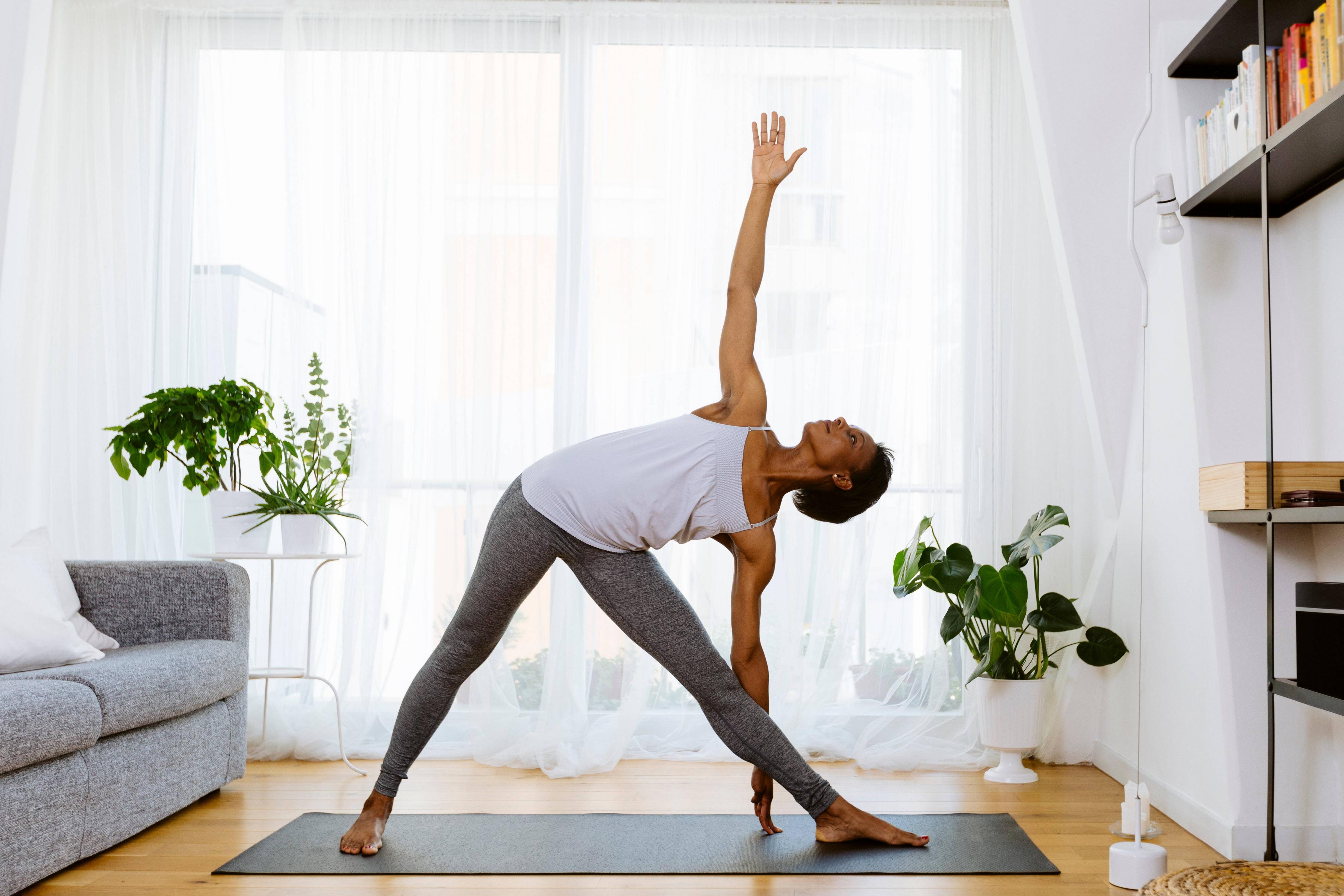
Constipation yoga is not just good for relieving stomach pain. The first one involves a simple, but effective twisting pose that stretches your abdominal muscles and stimulates the digestive system. In addition to improving your bowel movement, this yoga pose can also relieve the symptoms of periods and bloating. These are some of our favorite poses for constipation relief.
Cat-cow poses: This yoga posture stimulates the abdominal muscles by activating core muscle and simultaneously stimulating movement of the midsection. This yoga pose also requires exhaling air from the belly, which helps the intestines move. This is known to push the poop buttons. This pose is great to pair with a healthy diet, and plenty of sleep. It can help alleviate your constipation issues.
Crescent Lunge Twist, a pose in which you twist your torso. Because this pose doesn't require twisting, it is perfect for beginners. This pose will help to relieve constipation's gas-producing effects. Wind-Relieving Pose: This yoga pose is another great option for those suffering from constipation. It's an excellent inversion and can help to relieve gas. This is a great position to start with for beginners.

Crescent Lunge (basic yoga pose): This basic pose stimulates the digestive track and blood circulation to the internal organs. Crescent Lunge: To perform the Crescent Lunge, you need to stand on your hands and knees. Your palms should be facing forward. Place your right knee in front of your chest. Move your arms outwards. Tuck your stomach toward your navel. Repeat the process on the opposite side. This pose will strengthen your abdomen and bowels.
Wind-Relieving Pose: This yoga asana is beneficial for constipation. This exercise helps strengthen the abdominal muscles, and it also releases excess gas and acid. It is one the most complex asanas so be careful. When performing this pose, beginners should avoid straining their abdomens. You can also slow down the pace and increase your confidence if you are unsure.
Yoga is known for its many benefits to the digestive system. Yoga is a great way to regulate your bowel movements. For example, most of the serotonin produced in our bodies is produced in the gut, and strengthening the parasympathetic nervous system will help balance serotonin and cortisol.
The universal spine twist aligns the spinal column and abdominal organs. It can also help reduce belly fat. It is an excellent option for constipation relief. It is one of most loved supine asanas to relieve constipation. It is especially useful for people suffering from high bloodpressure or other medical conditions.

There are many other ways to treat constipation, aside from yoga. Warm water, walking and regular exercise are two great ways to reduce stress. You can also eliminate chronic constipation by eating a healthy diet. This will improve your digestive system's overall health. You can also do a gentle downward dog pose that will improve your posture and ease a sore back. This is especially helpful for those with chronic constipation.
Yoga for constipation is not only beneficial, but it's worth it because of its symptoms. By following these tips, you'll be able to pass stool without pain and discomfort. So, don't delay. Take a positive attitude, and try this pose right away!
Yins, Anti-Constipation, and Other Benefits of Standing Poses
Ardha Matsyendrasana, also known as needle pose, helps massage the digestive tract. This pose helps to cleanse the body and improve digestion. This is why it's especially useful in treating constipation. You can also sit for five to seven minute increments if you're not able to sit. Next, take a deep breath and then focus for a few minutes on the pose before you attempt it.
FAQ
How many calories do I need to eat each day?
This varies from person to person. An average person needs 2000-2500 calories per day. Based on your age, gender, height and activity level, you will need to calculate how many calories you require.
Which workout is best for men?
The answer will depend on what you are searching for. Cardio exercises are great for anyone looking to lose weight.
Strength training, on the other hand, is better if you are looking to increase muscle mass.
Both types of exercise have proven benefits if you want to improve your overall health.
I recommend HIIT (or sprint interval training) if you want to be fit quickly. This type training will help you quickly lose fat by increasing your metabolism. It increases your endurance so you can continue training even when tired.
How does weightlifting help you lose fat more quickly?
Weight lifting will help you burn more fat, but it's best to combine it and cardio.
It is important to do weightlifting right after cardio exercise in order to reap the full benefits.
Weightlifting, when done properly, increases your heart rate.
However, if you don't combine it with cardio you won't see any significant changes to your body composition.
Do I need to exercise every morning?
No! You should do at least 30 mins of moderate-intensity activity 5 days per week. This means that you should be able to walk fast enough to feel slightly out of breath, or bike hard enough to sweat.
Is it true that kidney stones can be caused by overeating protein?
Protein helps maintain healthy bone and tissue. Over-consuming protein can result in calcium being excreted through the kidneys. This can lead to kidney stone formation.
It is important to keep in mind that not everyone will develop kidney stones if they consume more protein than 2 grams per kilogram (2.2lbs). High amounts of protein can be consumed by some people without causing kidney stones.
You can prevent kidney stones by watching your sodium consumption. Sodium helps regulate water balance in the kidneys. Too much sodium can cause kidney stones.
If you have kidney stones, you can reduce your intake of protein. About half of adults' daily caloric intake is made up of protein. You'll lose weight if you reduce your intake of protein.
If you do decide to eat more protein, don't go overboard. Aim for less than 20% of total calories from protein.
Statistics
- Candidates and applicants must pass all four tests at 70% (minimum level) to graduate from Basic Deputy U.S. Marshal (BDUSM) Training. (usmarshals.gov)
- According to the American Academy of Dermatology (AAD), men over 50 are at a heightened risk of developing it. (healthline.com)
- Get free shipping and 25% off today. (healthline.com)
- By John Thompson Take a whopping 38% off a set of PowerBlock Pros. (menshealth.com)
- An estimated calorie range for moderately active adult males falls between 2,200 to 2,800 calories per day, depending on age. (eatright.org)
External Links
How To
How do I lose weight while working out?
Exercise burns calories by increasing metabolism and oxygen consumption.
Exercise at a moderate intensity to safely lose weight.
These tips can help you to burn fat while training:
-
Cardio exercises like walking, running (or jogging), swimming, cycling, running, and/or elliptical training are all good options.
-
Three times per week, exercise for 30 minutes.
-
If you want to lose more weight, add strength training to your routine.
-
Avoid intense workouts. You can build muscle without breaking down muscle tissue.
-
When exercising, make sure to drink lots of water. Water flushes out toxins, and keeps your body properly hydrated.
-
After working out, drink low-fat protein shakes. Protein shakes are great for your muscles and energy.
-
Eat smaller meals throughout the day, so you don't feel hungry between meals.
-
Don't skip breakfast! Skipping breakfast can make you tired and sluggish.
-
Take care of your mind. Stressful situations may slow down your metabolism.
-
Keep a positive attitude. Studies show that people who believe they are overweight gain more weight then those who think they are attractive.
-
Get enough rest. Lack of sleep makes it harder to burn fat.
-
Always be active. Move around at least once an hour.
-
Maintain a healthy diet. Healthy eating will keep you fuller and more satisfied for longer.
-
Find relaxation methods. Your body won't release stress hormones that cause muscle tissue destruction if you have a tense mind.
A balanced diet provides all the nutrients necessary for growth and development.
Consider eating six small meals daily instead of three big ones. This allows your body to properly digest what you have eaten.
You need about 500 milligrams of calcium daily to maintain strong bones. Calcium can be found as a dairy product such as milk, yogurt and fortified soy drinks, orange juices, cereals, breads, and cereals.
Calcium is found in leafy vegetables, beans and tofu, as well nuts, seeds and cheese.
Vitamin D is required by the body to absorb calcium. It's found in fatty fish, egg yolk, and some fortified foods.
Vitamin E is important for skin health. Vitamin E can also be found in vegetable oil, wheat germ oils, peanuts as well almonds, sunflower seeds and corn.
Your body needs zinc for normal immunity function and wound healing. Zinc can be found in seafood, legumes and meats.
Zinc deficiencies can lead to fatigue, decreased appetite, depression, and reduced immunity.
Consuming too much sugar can cause insulin resistance. This causes an increase in blood glucose levels. Insulin resistance can lead to weight gain.
Insulin resistance occurs when the bloodstream is full of free radicals. Free radicals can be molecules with unpaired electrons that cause damage to cell membranes.
The most common sources of free radicals include food additives.
Free radical damage can lead to cancer, heart disease, diabetes, arthritis, asthma, and aging.
A well-balanced diet rich in antioxidants is the best way for you to avoid free radical damage. Antioxidants protect against oxidative damage.
Vitamin C can be found in citrus fruits. Beta carotene can be found in carrots. Sweet potatoes. Tomatoes. Carrots. Sweet potatoes. Spinach. Broccoli. Cantaloupe. Vitamin E is found in nuts. Olive oil, avocados.
Selenium, copper and manganese are all antioxidant nutrients.
Selenium helps protect cells from oxidative damage caused by free radicals. Selenium can also be found in Brazil nuts (tuna), liver, kidneys and shrimp.
Copper protects the brain and eyes as well as the lungs and red blood cells. Copper can be found in meat, shellfish, meat, and organ meats.
Manganese is essential for bone structure. Manganese can also be found in oatmeal, brown rice, spinach and bananas.
Zinc is required for normal growth, reproduction and wound healing. Zn is found in lean cuts of meat, white fish, poultry, and eggs.